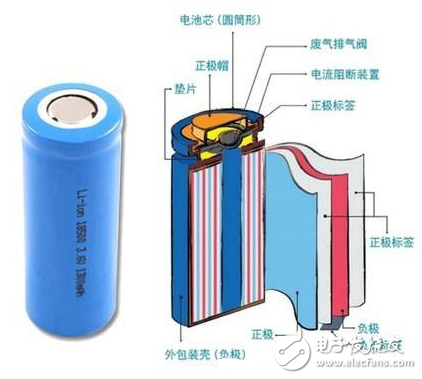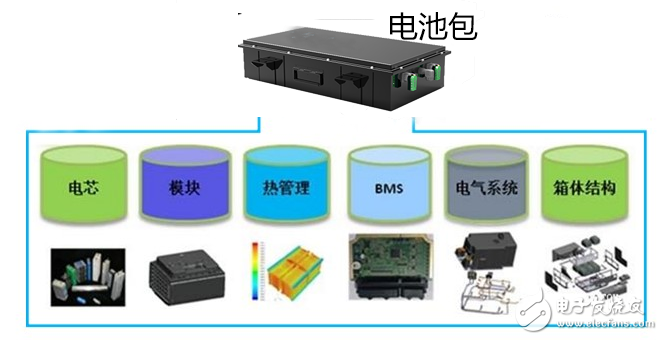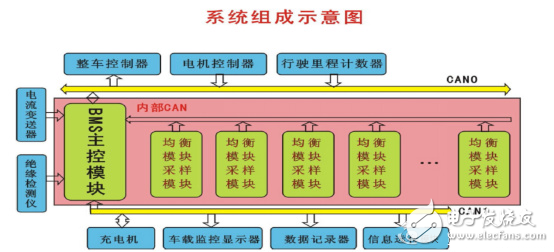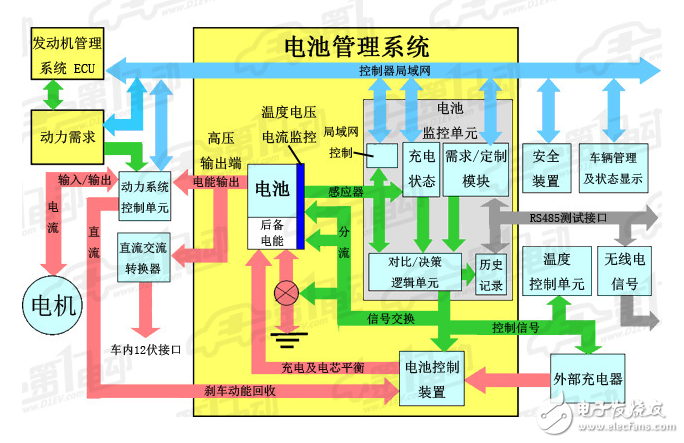Under the traditional energy and shortage and the objective requirements for environmental protection, new energy vehicles have become the development direction of the future car. In recent years, the new energy automobile industry has entered a rapid development track. In 2015, global new energy vehicles reached 500,000 units, of which 330,000 units were sold in China. In the rapid development of new energy vehicles, battery management systems (BMS) play a pivotal role as the core technology.
Why do new energy vehicles need BMS?Lithium batteries usually have two appearances: cylindrical and square. The inside of the battery adopts a spiral wound structure, and is formed by spacing a positive and negative electrode with a very fine and highly permeable polyethylene film insulation material. The positive electrode includes lithium cobaltate (or lithium nickel cobalt manganese oxide, lithium manganate, lithium iron phosphate, etc.). Graphite is often used as the anode material. Titanate may be a better material later.

Internal structure diagram of lithium battery
In layman's terms, lithium ions move through the diaphragm through the diaphragm in the process of charging and discharging. The quality of lithium ions is good or bad, depending on the number of moving back and forth. No, control is good, you can recharge without reducing the capacity, otherwise it will cause a permanent decline in battery capacity, and even explosion.
There are also some batteries, each batch of batteries in the manufacturing process, process problems and material unevenness, so that the activation level and thickness of the battery plate active material, microporosity, continuous strips, partitions, etc. Minor differences lead to incomplete consistency in internal structures and materials.
In actual use, the difference in electrolyte density, temperature and ventilation conditions, self-discharge degree, and charge and discharge process of each battery in the battery pack. There are differences in the values ​​of voltage, internal resistance, capacity, etc. of batteries of the same type and specification, so that when used on electric vehicles, the performance index often fails to reach the original level of the single battery, which seriously affects the electric Application on the car.
The battery packs are composed of series and parallel. The series is like a group of people. If one person walks slowly, it will affect the whole team. One of the battery's performance degradation will affect the performance of the entire battery pack. Causes an overall replacement.
If the lithium battery cell is too large, it is easy to generate high temperature during use, which is not conducive to safety. The large-capacity battery must form a battery pack by series-parallel connection. However, it is impossible for each single cell to achieve consistent performance, and the impact of the use environment will cause a difference in battery life, which greatly affects the life and performance of the entire battery pack.
Therefore, the lithium battery needs BMS (Battery Management System) to strictly control the charging and discharging process to avoid overcharging, overdischarge, and overheating. Extend the life of the battery pack and maximize its performance.
New energy car battery pack and BMSWe know that electric vehicle power batteries are made up of thousands of small batteries. The battery pack consists mainly of batteries, modules, electrical systems, thermal management systems, cabinets and BMS.

New energy car battery pack
The battery pack is the core component of the new energy vehicle, which provides driving energy for the whole vehicle. It mainly consists of a metal casing to form a battery pack protection body. The battery core realizes the integration of the battery core through the modular structure design, and includes the heat dissipation hardware of the battery core. The design of the heat dissipation system is the premise for the excellent management of the BMS, which is also an important embodiment of the advanced technology of the manufacturer. Through the thermal management design and simulation to optimize the thermal management performance of the battery pack, the electrical components and wiring harness realize the safety protection and connection path of the control system to the battery; the management of the battery core through BMS, and the communication and information exchange with the whole vehicle.

a complete battery pack system
BMS principle and system block diagramBattery Management System (BMS) is a system for managing batteries. It usually has the function of measuring battery voltage to prevent or avoid abnormal conditions such as battery over-discharge, over-charging and over-temperature. As technology advances, many features have gradually increased.
The battery management system is closely integrated with the power battery of the electric vehicle. The voltage, current and temperature of the battery are detected in real time through the sensor. At the same time, leakage detection, thermal management, battery balance management, alarm reminder, and calculation of remaining capacity (SOC) are also performed. , discharge power, report battery degradation degree (SOH) and residual capacity (SOC) status, and also control the maximum output power to obtain the maximum mileage according to the voltage, current and temperature of the battery, and use the algorithm to control the charger to perform the optimal current. Charging, real-time communication with the vehicle master controller, motor controller, energy control system, vehicle display system, etc. through the CAN bus interface.
BMS system block diagram

Nanning Nuoxin Technology Co., LTD , https://www.nx-vapes.com